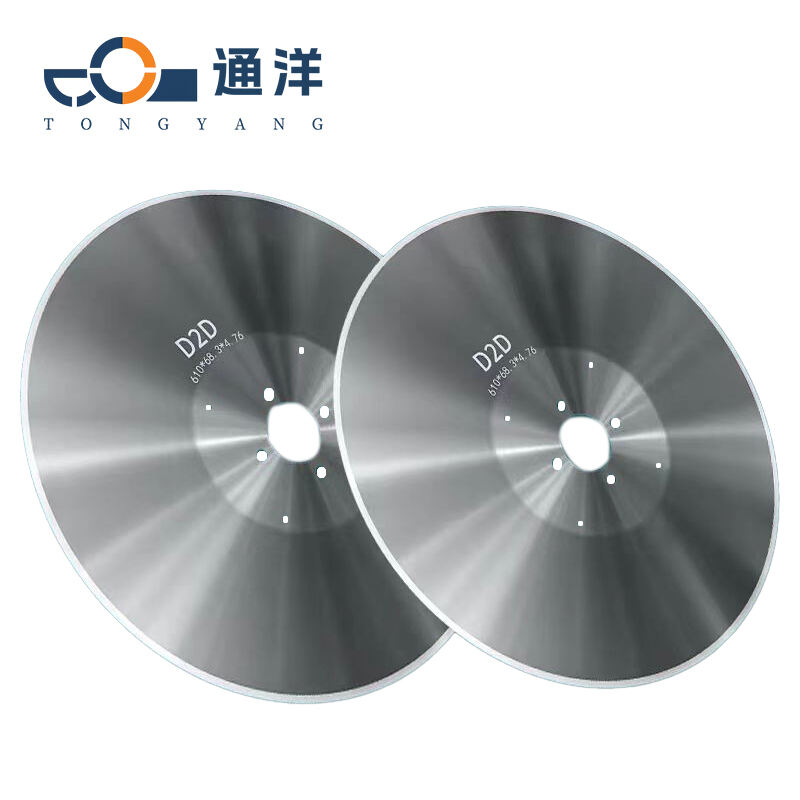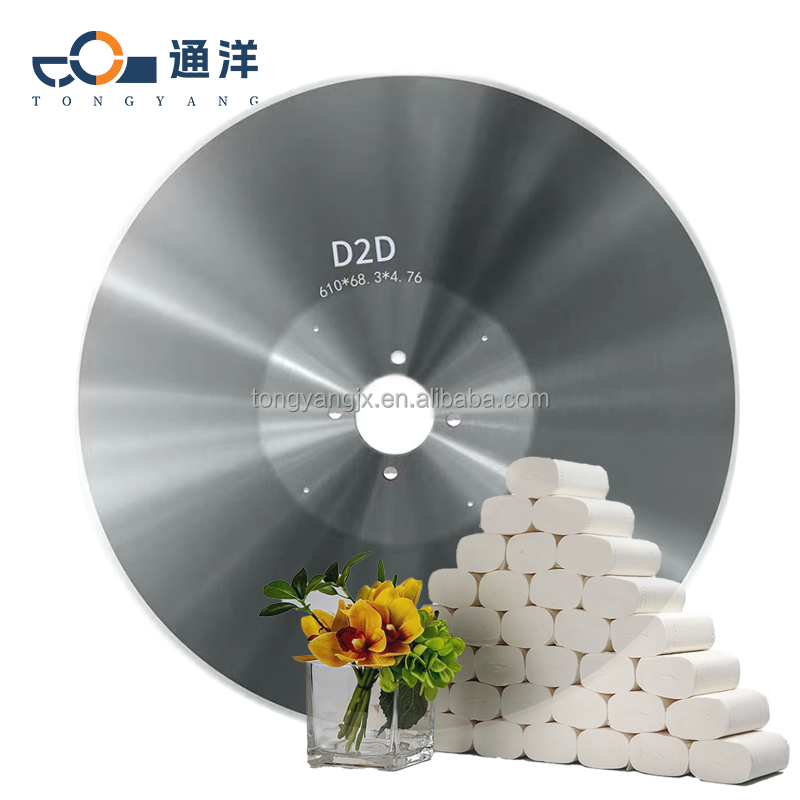Daily Cleaning Procedures for Round Blades
Debris Removal Techniques for Round Blades
Effective debris removal is crucial to maintaining the efficiency of round blades. I find using soft brushes or compressed air is a safe and effective method for removing wood chips and dust without compromising the blade surface. To tackle more stubborn debris like resin, I recommend incorporating specialized cleaning solutions that are designed to dissolve these materials without altering the integrity of the blade. It's also important to establish a routine cleaning schedule post-usage; this not only prevents buildup but also ensures optimal blade performance and longevity. Regular cleaning keeps blades functioning at their best and extends their usable life.
Removing Adhesive Residue Without Damage
Adhesive residues on round blades can be particularly pesky, but they can be removed effectively with the right approach. Solvent-based cleaners, which are safe for both metal and composite surfaces, are excellent for dissolving adhesives without damaging the blade material. When applying these cleaners, I find that using a microfiber cloth helps to minimize surface scratches, ensuring a smooth, gentle cleaning process. After cleaning with solvents, it's vital to perform a final rinse with water. This step removes any cleaner residue that might otherwise affect the blade's cutting performance, maintaining the sharpness and precision of the blade.
Post-Cleaning Blade Condition Checks
Conducting thorough checks on blade condition post-cleaning is a vital step in regular maintenance. I routinely perform a visual inspection for signs of wear or damage, often using a magnifying glass for more detailed scrutiny. This careful examination helps catch early signs of damage which could compromise the blade's function. Additionally, I perform a simple paper-cut test to check the sharpness and effectiveness of the blades after cleaning. It is also essential to ensure that the blades are properly dried to prevent rust formation. Using air blowers or lint-free cloths is effective for removing lingering moisture, helping to preserve the blade's quality and performance over time.
Weekly Lubrication Practices to Prevent Wear
Critical Components Requiring Regular Lubrication
To ensure efficient functionality and longevity, certain components of round blades necessitate regular lubrication. Among these are the bearings, pivots, and gears, which experience substantial friction during operation and are essential lubrication points. By documenting lubrication schedules based on operational hours, we can ensure consistency and reliability in maintenance. Prioritizing the upkeep of these components helps avert potential operational failures, ultimately prolonging the service life of the equipment.

Choosing the Right Lubricant for Different Blade Materials
Choosing the correct lubricant for different blade materials is crucial for optimal performance. High-speed steel, carbide, and composite materials each require specific types of lubricants. It's important to research the viscosity and application needs of lubricants to match them correctly with material characteristics. Environmental factors like temperature and humidity also play a crucial role in affecting the effectiveness of lubricants. By considering these aspects, we can enhance the performance and durability of our blades.
Application Methods to Ensure Smooth Blade Rotation
Various application methods, such as spraying, dipping, and brushing, offer unique benefits depending on the usage scenario. Each method needs to ensure even distribution to prevent friction, enabling smooth rotation and proper operation. Training operators on appropriate application techniques is essential to use lubricants effectively without wastage. Implementing these methods can significantly improve the efficiency and lifespan of round blades.
Sharpening Cycles Based on Material and Cutting Frequency
Determining Sharpening Intervals for Metal vs. Composite Blades
Understanding the sharpening intervals for different blade types is crucial for maintaining cutting efficiency and prolonging blade life. Generally, metal blades require sharpening every 30 operational hours, while composite blades can extend to about 40 hours. Factors such as cutting conditions, material hardness, and environmental humidity can influence these intervals. For instance, humid conditions might lead to faster dulling, necessitating more frequent sharpening. To back up these guidelines, we can reference expert insights and charts from blade manufacturers, which underline the importance of adhering to recommended maintenance schedules.
High-Usage vs. Low-Usage Sharpening Schedules
Different usage environments necessitate specific sharpening schedules. In high-usage settings, daily checks are advisable to ensure optimal performance, whereas low-usage environments may only require weekly assessments. We encourage flexibility by teaching users to adjust intervals based on performance feedback. This approach is supported by reviewing historical data, which helps in making informed decisions about blade maintenance. By catering sharpening schedules to actual usage, not only is operational efficiency enhanced, but it also prevents unnecessary downtimes.
Recognizing Performance Declines Requiring Immediate Attention
Being vigilant for signs of performance decline is vital to avoid further damage and maintain operational efficiency. Indicators such as increased noise, resistance during cuts, or rough edges signal the need for immediate blade sharpening. Routine monitoring and heightened user awareness can help identify these red flags early, allowing for timely interventions. Providing operators with a checklist for quick assessment during usage can streamline this preventative maintenance process. By catching issues early, the need for intensive repairs is minimized, ensuring the longevity and efficiency of the blades.
Monthly Inspection Protocols for Round Blades
Identifying Uneven Wear Patterns Through Visual Analysis
Visual inspections are crucial for detecting uneven wear patterns in round blades, ensuring longevity and efficiency. Users should primarily focus on spotting irregular edges, which often serve as early indicators of wear. For instance, if a blade exhibits a wavy or serrated edge instead of a smooth line, it may be unevenly worn. Incorporating diagrams or images depicting typical wear patterns can greatly assist in this process, allowing team members to visually identify issues and react appropriately. Regular inspections should be scheduled monthly, integrating thorough checks into routine maintenance protocols to foster awareness and prompt action.
Crack Detection Methods Using Magnification Tools
For detecting blade cracks, magnification tools like jeweler's loupes are effective in offering a detailed view. By magnifying the blade's surface, users can identify tiny fissures that might otherwise remain unnoticed. An alternative advanced inspection technique is dye penetration testing, which involves applying a penetrant to the blade's surface and then using a developer to draw out cracks as visible indications. Statistics underscore the value of these methods, as undetected cracks can lead to significant operational failures, making monthly inspections an essential practice for maintaining equipment integrity and safety.
Balancing Checks to Eliminate Vibration Risks
Balancing checks are vital in mitigating risks associated with vibrations during blade operation, which can damage machinery and lead to increased wear. Emphasizing the importance of these checks helps maintain operational efficiency and safety. Tools such as spindle balancers are effective for conducting precise assessments and ensuring blades are balanced correctly. Ignoring these checks can result in severe consequences, such as machine damage and excessive blade wear, underscoring the need for these practices within monthly inspection protocols.
Optimizing Manufacturer-Recommended Maintenance Cycles
Interpreting OEM Guidelines for Blade Longevity
OEM guidelines act as the blueprint for developing maintenance routines that enhance the life of round blades. These guidelines often detail recommended intervals and techniques specific to different blade designs, optimizing both performance and durability. Insight from OEM manuals highlights why adhering to these suggestions is critical, emphasizing the engineering behind the recommended maintenance cycles. According to industry reports, companies following OEM guidelines have observed a notable increase in blade longevity—sometimes extending blade life by up to 30%. This data underlines the importance of integrating OEM advice in routine checks to ensure equipment reliability.
Customizing Generic Schedules to Operational Demands
Adapting generic maintenance schedules to align with operational demands is crucial for maximizing the efficiency of round blades. By considering unique production cycles and blade usage patterns, businesses can tailor schedules that better fit their specific needs. Engaging operational teams in this process encourages collaborative adjustments, fostering more efficient practices. For example, a manufacturing plant successfully customized its maintenance routine by analyzing blade wear across different shifts, resulting in a 20% decrease in downtime. Such examples showcase how personalized adjustments can lead to operational success and enhanced blade performance.
Documentation Strategies for Warranty Compliance
Proper documentation of maintenance activities is key to maintaining warranty compliance and avoiding potential voids. By implementing a meticulous tracking system, such as maintenance management software, businesses can meticulously log each maintenance task performed. This not only aids in safeguarding warranties but also establishes a record that links thorough maintenance with extended blade lifespan. Data from warranty reports reveal that equipment with well-documented maintenance histories tends to exhibit superior durability and reliability. Therefore, adopting structured documentation strategies serves as both a protective and proactive measure.
Advanced Maintenance Techniques for Round Blades
Temperature Control During Intensive Cutting Operations
Maintaining optimal cutting temperatures is crucial during intensive cutting operations to extend the life of round blades. Effective strategies such as using advanced cooling systems, specialized lubricants, and selecting appropriate materials are essential. Research highlights that proper temperature control significantly reduces blade wear and tear. For example, studies indicate that blades operating within optimal temperature ranges experience fatigue far later than those without temperature regulation. For best practices in high-stress cutting environments, I ensure regular monitoring of blade temperatures using infrared sensors or integrated thermal imaging. This proactive approach not only maximizes blade efficiency but also minimizes unexpected downtimes.
Implementing Protective Coatings Against Corrosion
Applying protective coatings like Titanium Nitride has been proven to boost blade lifespan and performance. These coatings create a barrier that shields the blade from corrosion and wear, particularly in challenging environments. The application process involves precise deposition techniques to ensure uniform coverage, and they are compatible with various round blade materials, including stainless steel and alloy. Studies demonstrate that coated blades outperform non-coated ones, maintaining sharper edges for longer periods across industries such as metalworking and food processing. Emphasizing coating integration in maintenance routines can result in substantial cost savings and enhanced operational efficiency.
Automated Monitoring Systems for Wear Prevention
Modern automated monitoring systems now play a critical role in predicting maintenance needs by tracking blade wear using sensors. These systems provide real-time data on blade condition, allowing for timely interventions and reducing the risk of operational disruptions. A cost-benefit analysis often reveals that investing in these technologies offers superior long-term savings compared to sticking with traditional maintenance schedules. The industry's shift towards automated monitoring is driven by innovations from leading technology providers who offer robust solutions. By adopting these systems, businesses are better positioned to prevent premature wear and optimize their maintenance strategies.
FAQ
How often should I clean round blades?
Round blades should be cleaned after each use to prevent debris buildup and maintain optimal performance.
What is the best way to remove adhesive residues from round blades?
Solvent-based cleaners are effective for removing adhesive residues from round blades without damaging the material.
When should I perform checks for blade condition?
A thorough inspection should be conducted post-cleaning and monthly during regular maintenance to identify early signs of wear or damage.
How often should round blades be lubricated?
Certain components of round blades, like bearings, pivots, and gears, need regular lubrication based on operational hours.
What should I consider when choosing lubricants for different blade materials?
Research the specific viscosity and application needs of lubricants to match them with the characteristics of high-speed steel, carbide, or composite materials.

